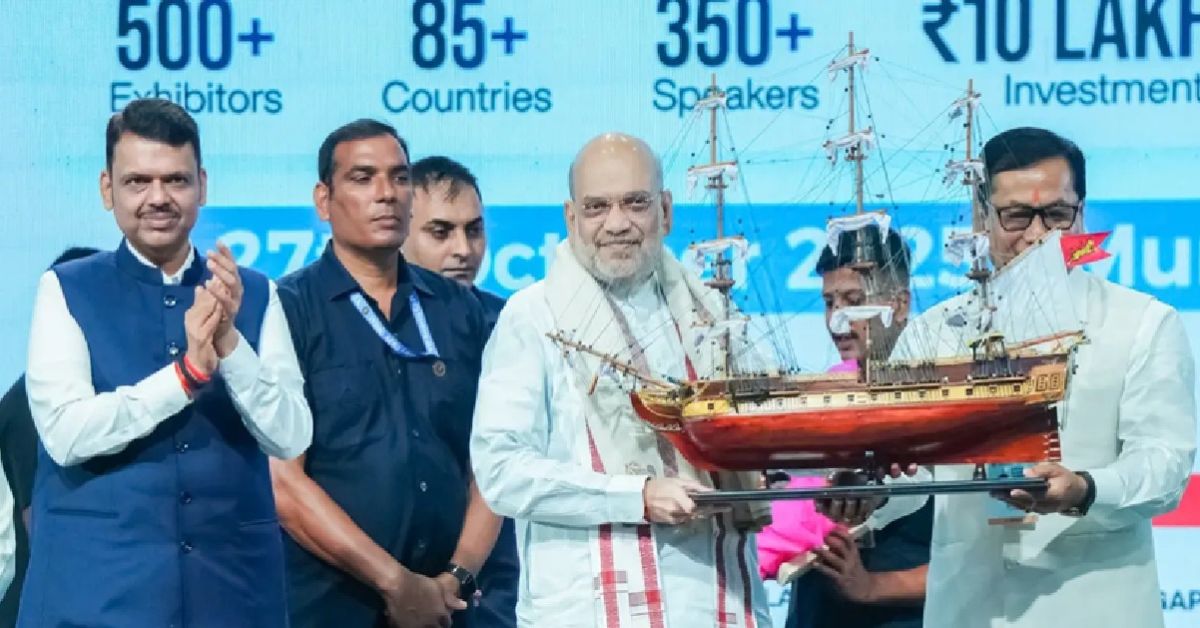India is poised to transform its maritime landscape with the ambitious Great Nicobar infrastructure project, which Union Home Minister Amit Shah said will significantly expand the nation’s global trade capabilities and position India among the world’s top five shipbuilding countries.
Speaking at the inaugural session of India Maritime Week 2025 in Mumbai on October 27, Shah said the government’s maritime vision focuses on capacity expansion, technological modernisation, and global partnerships to unlock India’s full ocean economy potential.
The $5-billion Great Nicobar project—comprising a transshipment port, airport, and power plant—is a flagship component of this strategy. Despite concerns raised by environmental groups and local communities regarding ecological and forest impacts, the government maintains that the project will serve as a strategic gateway connecting India more closely with major global trade routes in the Indo-Pacific.
“India’s maritime strength lies in cooperation and global partnerships, rooted in its 5,000-year-old maritime heritage. With a coastline of over 11,500 km spanning 13 coastal states, maritime activities already contribute nearly 60% of our GDP. The Great Nicobar project will multiply our trade capacity and secure India’s place as a key global maritime player,” Shah said.
Highlighting the government’s long-term vision, Shah announced plans to expand India’s port-handling capacity from the current 2,700 million tonnes per annum (MTPA) to 10,000 MTPA through the development of new mega ports and port-linked industrial corridors.
India Maritime Week 2025, organised by the Ministry of Ports, Shipping and Waterways, features participation from over 100 countries, 500 companies, 350 speakers, and more than one lakh delegates. The event aims to attract ₹10 lakh crore in maritime investment commitments, reinforcing India’s emergence as a central node in global trade.
Shah also underlined India’s growing leadership in the Indo-Pacific region, noting that the country’s maritime position, democratic governance, and naval strength are enabling it to act as a bridge between the Indo-Pacific and the Global South—promoting security, connectivity, and sustainable development.
The Home Minister pointed to robust growth across the sector, citing a 118% rise in coastal shipping and 150% growth in cargo handling over the past decade. “Turnaround times at Indian ports are being reduced to global standards,” he said, emphasizing efficiency and digitalisation as core priorities.
Union Minister for Road Transport and Highways Nitin Gadkari said reducing India’s logistics cost from the current 16% of GDP to single digits (9%) is a national priority. “Efficient logistics are central to economic growth. We must create innovative, simple, and viable financial models to mobilize capital for shipbuilding and maritime infrastructure,” he noted.
Union Minister for Ports, Shipping and Waterways Sarbananda Sonowal added that 680 MoUs worth ₹10 lakh crore are expected to be signed during the event, signalling unprecedented investor confidence.
“By 2047, India will rank among the world’s top five shipbuilding nations. This is a defining moment for our blue economy and maritime future,” Sonowal said.
With strong political commitment, massive investments, and an expanding global footprint, India’s maritime sector is entering a transformative phase—anchored by projects like Great Nicobar that are set to redefine the country’s trade, connectivity, and ocean economy over the coming decades.









